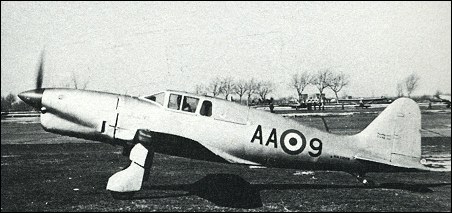 |
Ambrosini S.71939 |  |
| TRAINER | Virtual Aircraft Museum / Italy / Ambrosini |
 |
Sergio Stefanutti designed the Ambrosini S.A.I.7 two-seat high-speed tourer monoplane between October 1938 and April 1939. The S.7 was undoubtedly one of the best looking aircraft ever, a sleek low-wing cantilever monoplane of wooden construction with fully retractable landing gear. The first two aircraft were specifically intended to take part in the prestigious IV Avio Raduno del Littorio contest for touring aircraft, and they flew within days of each other, only shortly before the competition opened at Rimini aerodrome on 15 July 1939. For the purpose of the contest, the culmination of which was a racing event, both aircraft had an additional streamlined glazed section added between the nose and the normal cabin enclosure. Although the S.A.I.7s did not win the contest, due mainly to all too brief proving flights, their performance impressed the Italian authorities, especially after one machine captured an international speed record over the 100km closed circuit on 27 August 1939. Nevertheless, little was heard of the S.7 during World War II, though the experimental S.A.I.107, S.A.I.207 and S.A.I.403 light fighters were developed from it, and 10 of the S.A.I.7 militarised two-seat fighter trainer version appeared during 1943; but that was all until 1949, when S.A.I. Ambrosini placed it in full-scale production. The post-war version replaced the 209kW Hirth HM.508D engine of the record-breakers and the 209kW Isotta-Fraschini Beta RC.10 of the wartime version with an Alfa Romeo powerplant, but apart from improved constructional detail there were few major changes. Most of the 145 post-war Ambrosini S.7s, some of them completed in single-seat configuration, formed the equipment of various flight training centres attached to the Aeronautica Militare zone headquarters. Apart from its military service, which terminated in 1956, the S.7 participated in numerous competitions with distinction. Leonardo Bonzi established international records over the 100km and 1000km distances on 21 December 1951, with average speeds of 367.36km/h and 358.63km/h respectively.
|  COMPANY PROFILE | ||||||||||||||||||||||||||||||||||||||||||||||||||||
 |

|
